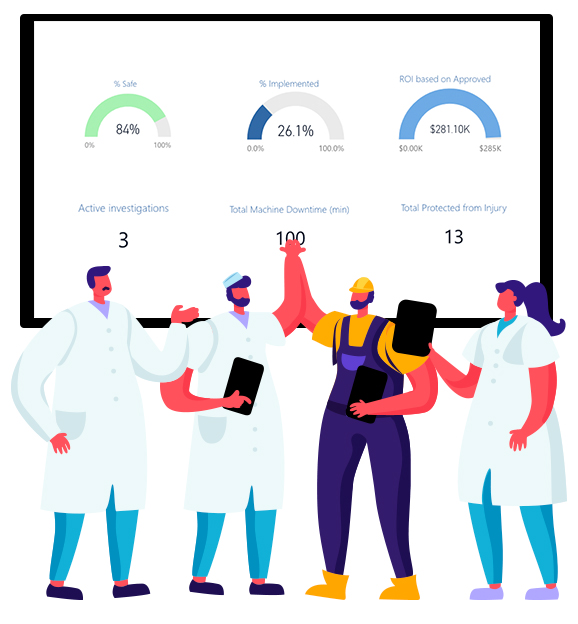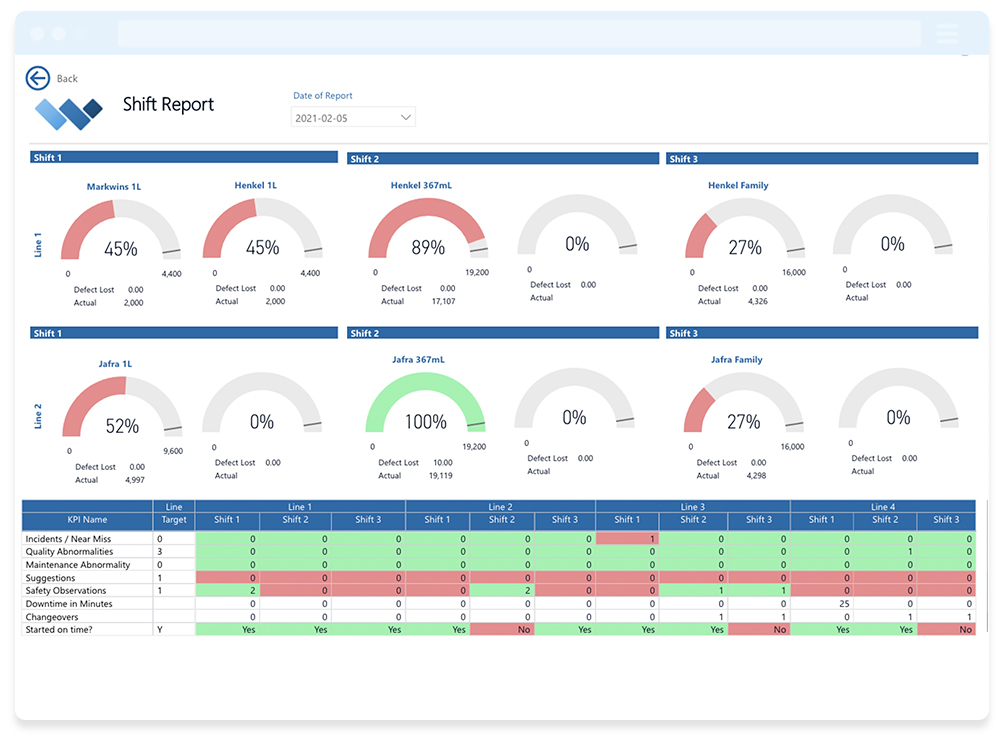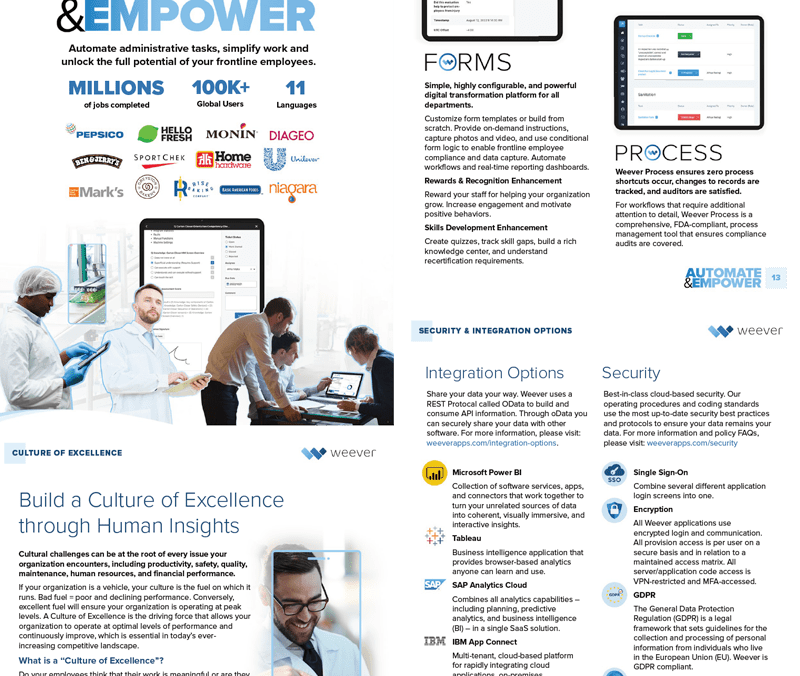How to effectively manage end-of-shift reports in manufacturing
Weever is Operational Excellence Software that empowers the pursuit of perfection by enhancing operational visibility, collaboration and productivity in quality, maintenance, safety and production.
This article reviews the following topics:

What are end-of-shift reports?
A shift report (a.k.a. End-of-Shift Report or Shift Change Report) is a document used to to highlight and communicate what occurred during a shift to the next shift. Managers use shift reports to pass along meaningful information such as:
- Production - what was produced, OEE, end-of-shift production status
- Safety - incidents, near misses
- Quality - Defects found and corrected
- Maintenance - Unplanned stops and breakdowns, machine inspections completed
- Abnormalities - found and fixed
- Continuous Improvement - 5S, prevention and improvement projects
Why are they valuable?
Shift Report data allows for continuity of operations. Production and projects do not stop simply because a shift stops. The information helps subsequent shift stakeholders make a plan for the shift and move projects forward.
3 Tips to improve your end-of-shift reports
1. Broadcast Updates
Use HD TVs at each line to broadcast the key data from the last shift. The data can be used to inform the shift huddle. There are a variety of ways to visualize your shift reports.
One of our customers opted for a view for each line.
Another wanted to see the entire plant, including all of the lines, in one single view.
Whatever your needs, we can accommodate with a custom Microsoft Power BI report.

2. Capture Data with Mobile Devices
Use iPads or another mobile device to quickly capture data from the floor including downtime minutes and reasons, production data, safety incidents and so forth. Mobile devices make reporting more efficient so operators can keep their focus on the line. You can also capture much richer information, including photos, and add it to the report automatically in real-time.
There are many advantages to digitizing data capture on the factory floor. Learn more here.

3. Report the Essentials and Avoid Clutter
Once managers realize the impact of digitizing their shift reports, there is a natural tendency to add as much as possible to the shift reports. In the case of end-of-shift reports, less is more.
Additional information can cause clutter and distraction. Instead of adding more information, you can add layers to your communication and links to other reports that provide more information.
For example, use red and green to indicate what is within or outside of acceptable ranges to make for more intuitive reports that create more efficient meetings.

Hope this list helps you move your digitization project forward.
Weever is Operational Excellence Software that empowers the pursuit of perfection by enhancing operational visibility, collaboration and productivity in quality, maintenance, safety and production.
To learn more about how Weever can help you attain results in OpEx, please feel free to get in touch.

Learn about the Platform.
Download the brochure to get all the details about how Weever works.